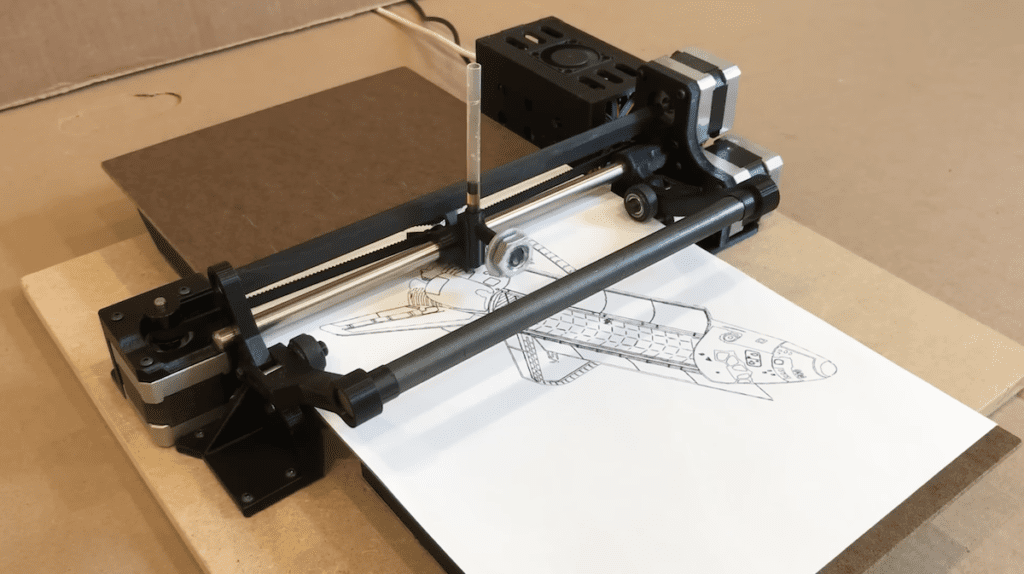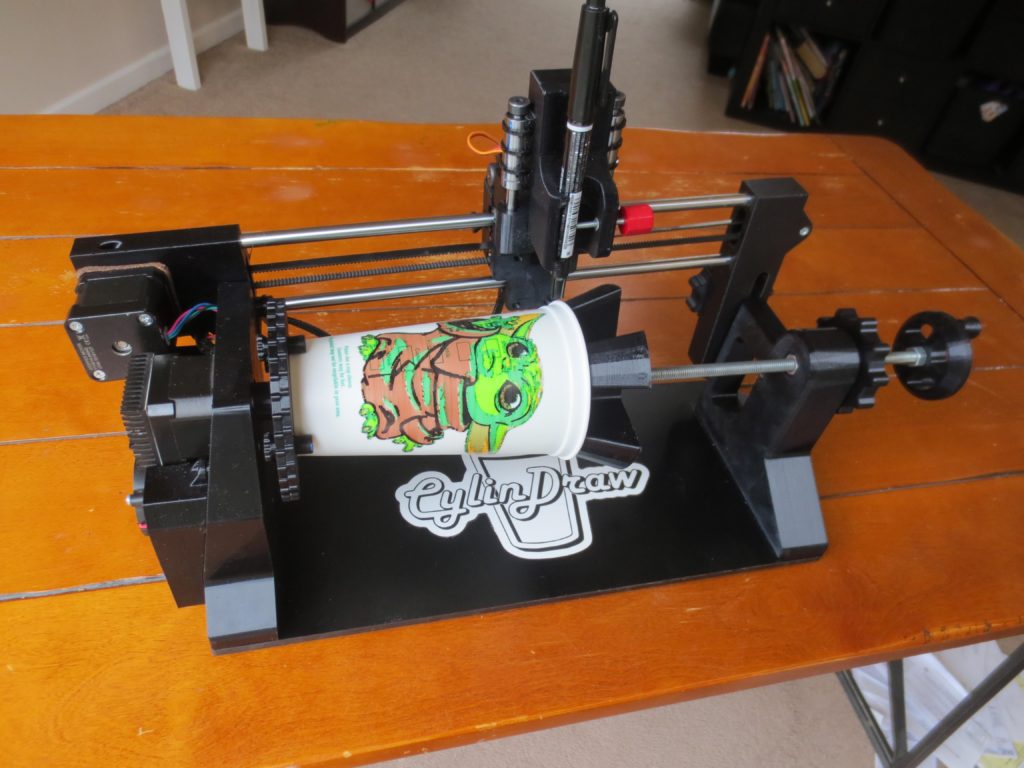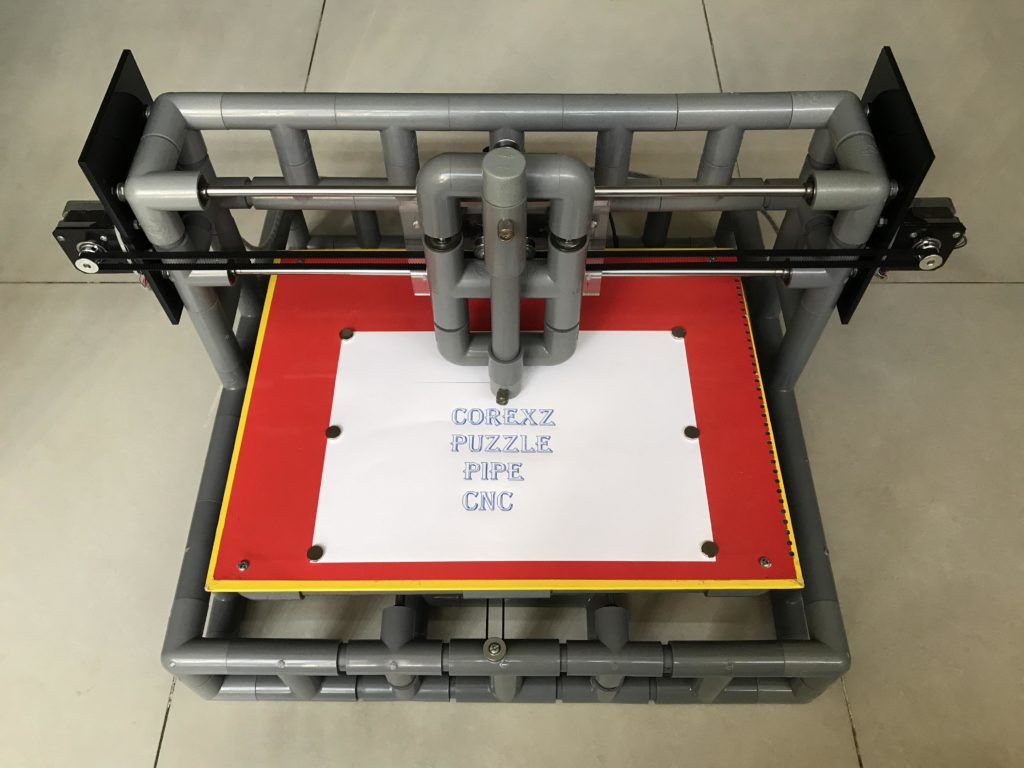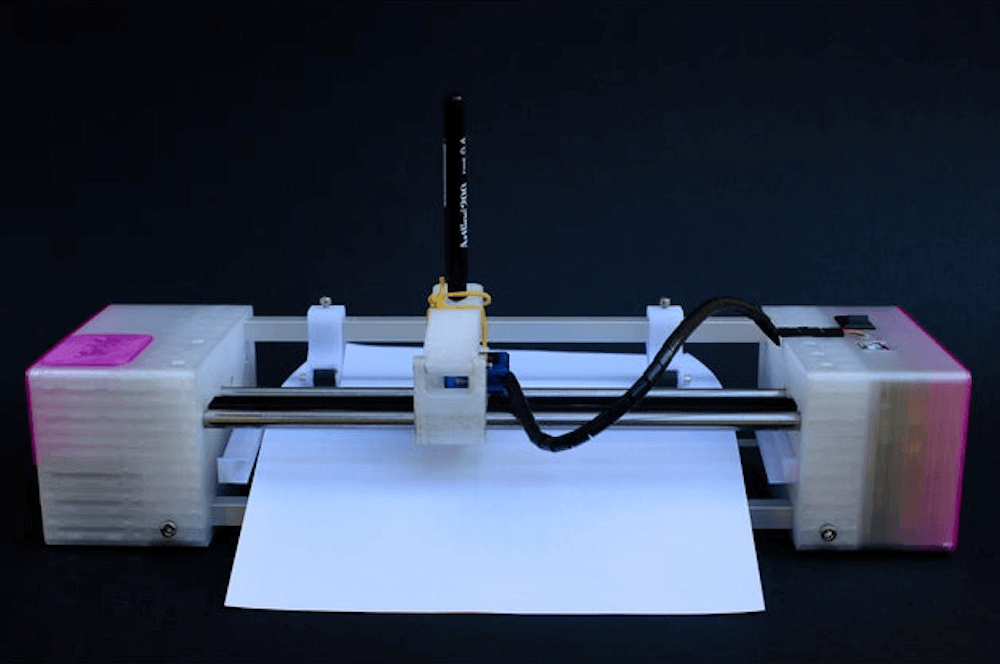Schlagwort: Arduino Plotter
-

This high-speed Arduino pen plotter creates drawings in mere minutes
Reading Time: 2 minutesArduino Team — June 21st, 2022 Pen plotting projects are everywhere nowadays, with the vast majority using a couple of stepper motors for moving the writing utensil and a servo to raise or lower it. But they are quite slow due to the lack of rigid assembly and because the servo motor…
-

Plot designs onto cups with CylinDraw
Reading Time: 2 minutesArduino Team — January 18th, 2022 Most plotters are planar, meaning they move in a single plane — though they often have the ability to move the tool up and down in the third axis. But if you convert one axis of the drawing plane into rotation, you get cylindrical plotting. That…
-

PVC pipe plotter prints pretty pictures
Reading Time: 2 minutesArduino Team — January 5th, 2022 Instructables user tuenhidiy wanted to create a new kind of CNC plotter that was unlike nearly all of the others you’ve seen. Rather than use aluminum extrusions or wood, this machine is constructed from various pieces of PVC pipe all cut to exact lengths, hence its…
-

d.i.d. is a scalable 3D-printed pen plotter
Reading Time: 2 minutesd.i.d. is a scalable 3D-printed pen plotter Arduino Team — August 29th, 2019 While computer printers are readily available, if you’d like a plotting device that drags a pen, marker, or whatever you need across paper to create images, your options are more limited. To fill this gap, studioprogettiperduti has come up…



